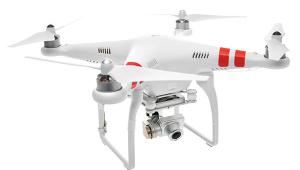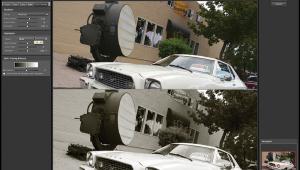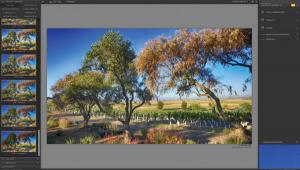Digital Innovations
It’s National Hardware Month...Again; Gizmos, Gadgets, And Widgets, Oh My!
"There is only you and your camera. The limitations in your photography are in yourself, for what we see is what we are."--Ernst Haas
Whenever I rant about how it's the photographer's vision not the hardware that's important for creating memorable images, I'm reminded of when I was younger and shooting pictures with a well-used Minolta SR-1, how older more established shooters using the latest cameras told me the same thing. These days I'm shooting with Leicas and Hasselblads--that didn't happen overnight--and still believe it's the vision not the hardware. That said, while you can make pictures with a Quaker Oats box converted into a pinhole camera, it's more convenient to use photographic hardware. After last month's focus on software, this month we'll take a look at some essential gizmos, gadgets, and widgets for the digital photographer.
 |
|
|
Get A Grip
Nothing breaks the mood of a creative shoot faster than having your camera run
out of battery power. I'm a fan of digital SLR power grips because they
provide additional battery capacity for longer shoots and critical moments,
such as the bride and groom walking back down the altar, when you don't
want to run out of power. Hoodman's (www.hoodmanusa.com)
Vertical PowerGrips give owners of some digital SLRs twice the battery power
and, like OEM grips, attach via the camera's battery compartment while
providing a vertical shutter release. The PowerGrips for Nikon's D70 use
fiber optics to activate the shutter release, while models for Canon's
EOS 20D and EOS Digital Rebel XT use the host camera's internal shutter
release system. Included in the package is an OEM battery and an AA battery
compartment. Based on my experience with short battery life when using non-rechargeables
in the EOS 20D, this accessory should be reserved for emergencies only.
 |
|
|
Maxi Use Of Your Mini
The Mac mini (www.apple.com)
is a wonderful computer for space-challenged digital imagers. Measuring 6.5"
square and 2" tall, the mini offers two USB 2.0 ports and one FireWire
port but that may or may not be enough for some busy shooters. Belkin Corporation
(www.belkin.com) offers ZFP (Zero Footprint) USB and FireWire Hubs engineered
to stack on top of or below the Mac mini. The Hi-Speed USB 2.0 4-Port Hub costs
$34.95 and allows you to connect up to four devices to your Mac mini. The $49.95
Hi-Speed USB 2.0 and FireWire 6-Port Hub offers two FireWire and four USB 2.0
ports. A single USB and a FireWire port are located on the front for easy access
to USB devices such as the iPod Shuffle or pen drives, such as Memorex's
M-Flyer.
 |
|
|
Futuristic Pen Drive
Pen drives are useful tools for the digital imager on the go. The winner of
the award for pen drive most likely to be used by Sky Captain and the World
of Tomorrow is Memorex's (www.memorex.com)
M-Flyer USB flash drive. The M-Flyer USB flash drive features a sleek and aerodynamic
design, a retractable USB connector, and a software suite. It's available
in storage capacities of 512MB, 1GB, and 2GB with suggested retail prices of
$69.99, $119.95, and $219.99.
 |
|
|
Because You Can Never Have Too Many Screens
Tritton Technologies' (www.trittonsales.com)
SEE2 gizmo lets you connect a second monitor or LCD projector to your computer
through a USB 2.0 port without cracking open your case to install an expensive
dual video card. This USB 2.0 to SVGA adapter supports up to 1280x1024 resolution
video with up to 16-bit color. Why two monitors? That's an ideal setup
for viewing multiple windows and multi-tasking without having to wade though
windows on a single monitor no matter how big it might be. The SEE2 supports
resolutions at 1280x1024, 1024x768, 800x600, or 640x480 and is compatible with
Windows 2000/XP systems with an available USB 2.0 port. A SEE2 Pro model for
Mac OS computers, including the Mac mini, should be available by the time you
read this column. If you don't have an extra or even a single USB 2.0
port, Belkin offers three different USB 2.0 cards for less than $40 that plug
into a spare slot inside your computer.
 |
|
|
- Log in or register to post comments

















































